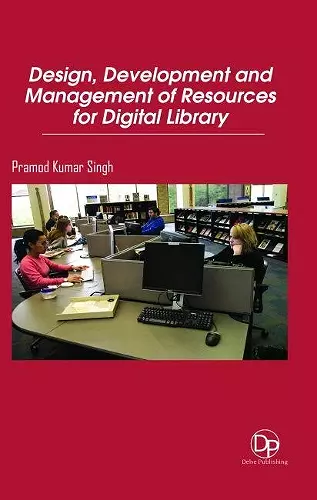Design, Development and Management of Resources for Digital Library
Format:Hardback
Publisher:Delve Publishing
Published:28th Feb '18
Should be back in stock very soon

In this book, changes in the collection of funds and attendance of libraries under the influence of the growing popularity of electronic resources in comparison with paper libraries are considered. Methods of increasing the efficiency of using licensed databases, improving electronic catalogs and websites of libraries are discussed. A brief review of metadata formats describing electronic resources and collections, logical structures of electronic publications, as well as standards for data collection and exchange was made. A range of new responsibilities for librarians responsible for electronic resources is described. Changes in the field of library education are considered. Problems of preservation of electronic resources, their influence on schoolchildren, students and in general on libraries are discussed.
Over the last ten to fifteen years, a new generation of readers has grown up in Western and northeastern European countries (especially in the US and Russia), who prefer electronic editions to paper. Accordingly, libraries increasingly redistribute funds in favor of electronic publications to the detriment of paper publications. The American Association of Scientific Libraries, having conducted a study among more than 100 of its members, found that over the last decade, the annual average library spending on electronic resources increased by 400% to approximately $ 1.5 million in 2002. At the same time, the total budget for the acquisition of library funds in the same period grew by only 61%. Libraries, as a rule, primarily cancel paper subscriptions to publications in the field of humanities and social and political sciences, and subscriptions to scientific and technical publications are canceled to a lesser extent. The advantages of using electronic publications are well known to librarians, and they are actively replenishing their collections. A large university library today can offer students, faculty and researchers up to 25,000 electronic periodicals in licensed databases and up to 200,000 e-books and more.
In addition to paid electronic resources, the easy-to-use Internet search engines (Google, for example) and websites provide serious competition to traditional library collections. Recognizing the fact that more and more readers use the Internet to access information, libraries themselves have actively engaged in the creation of electronic collections by digitizing their own funds and building electronic libraries. Collections of materials for digitization, digitization technologies and methods of building electronic libraries...
ISBN: 9781680959390
Dimensions: unknown
Weight: unknown
236 pages